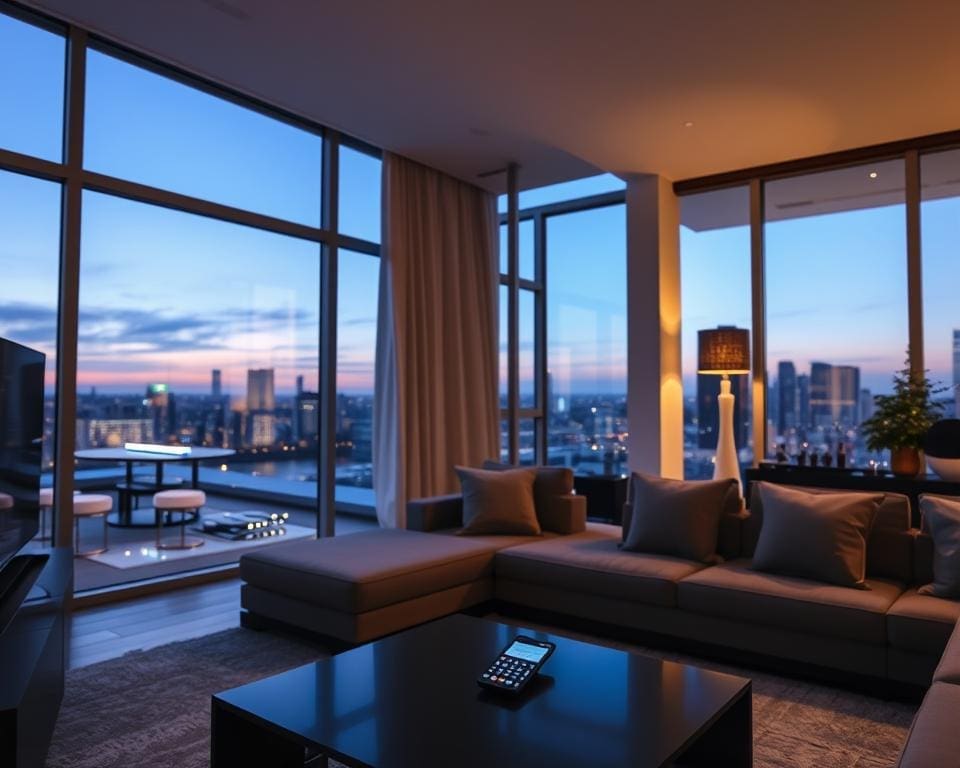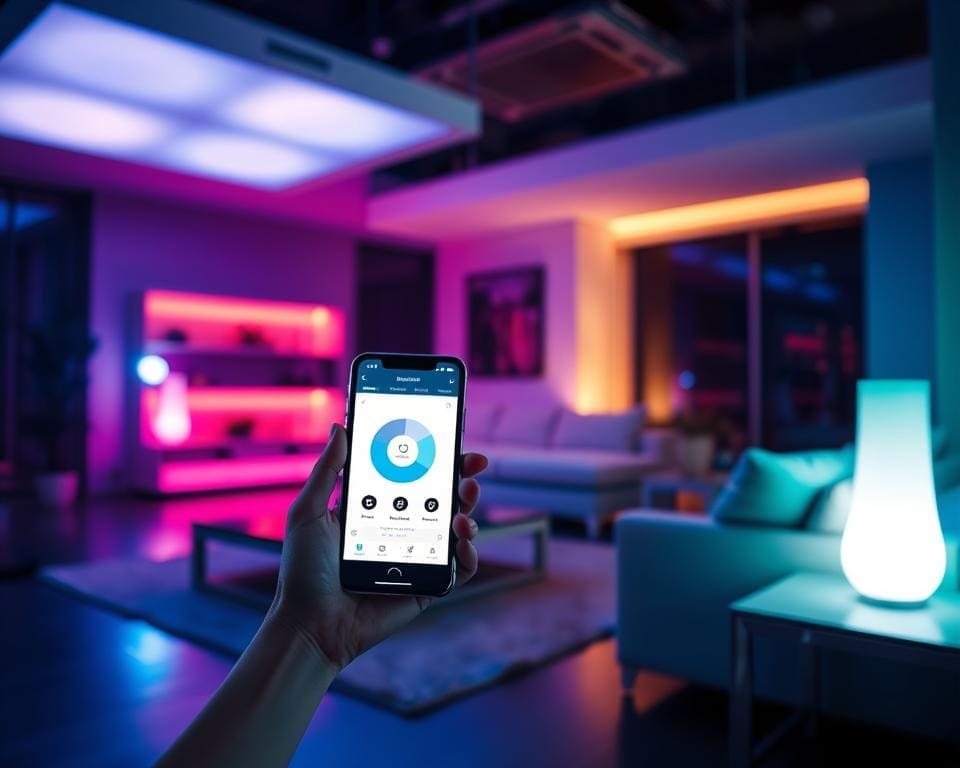Imagine effortlessly managing your home lighting with just a touch on your smartphone or tablet. Smart lighting with remote access revolutionises the way we illuminate our spaces, offering unparalleled convenience to control from anywhere. These innovative illumination systems provide not only aesthetic enhancement but also significant flexibility in adjusting your home’s ambience to suit any occasion.
Recent advancements in technology have made it possible to automate lighting settings, allowing you to tailor your environment precisely to your preferences. With the ease of wireless lighting control, users can adjust the brightness, colour, and timing of their lights, seamlessly integrating these features into their daily lives. This innovative approach enriches the user’s lifestyle, transforming a simple routine task into a highly enjoyable experience. To delve deeper into the options that beautify your outdoor areas, consider exploring outdoor lighting ideas that compliment indoor innovations.
Understanding Smart Lighting with Remote Access
The rapid evolution of smart lighting technology has made it easier for homeowners to control their lighting environments with unprecedented convenience. Central to this surge in popularity is the integration of remote access technology, which leverages the power of the Internet of Things (IoT) to create seamless connectivity through internet-connected lighting systems.
The Technology Behind Smart Lighting
Smart lighting systems employ various components that enhance user experience. Sensors detect motion and ambient light levels, enabling lights to adjust accordingly. Additionally, smart light bulbs are equipped with built-in Wi-Fi or Bluetooth capabilities, allowing for direct communication with mobile apps. Users can manipulate their settings from anywhere, creating a truly personalised experience. The level of flexibility and control offered through these devices revolutionises how people perceive lighting, making it more than just a practical necessity. For those seeking eco-friendly solutions, options like solar-powered lights available at this link illustrate the fusion of sustainability and technological advancement.
How Remote Access Works
Remote access works through sophisticated cloud services and mobile applications, which act as bridges between users and their smart lighting setups. These technologies allow users to control their lighting even when not at home. Whether adjusting brightness, changing colours, or setting timers, remote access empowers individuals to make real-time adjustments. This capability not only enhances convenience but also adds a layer of security, making it appear as if someone is home when they are actually away. The seamless integration of these technologies exemplifies the true potential of smart lighting technology in transforming everyday living spaces.

Benefits of Using Smart Lighting Systems
The advantages of smart lighting systems are extensive, offering both functionality and peace of mind. As technology progresses, embracing smart lighting can significantly enhance the quality of life at home while being environmentally responsible.
Enhanced Convenience and Control
One of the primary smart lighting benefits lies in the convenience it brings. Users can manage their lighting from anywhere using a smartphone or tablet application. This includes scheduling lights to turn on and off, adjusting brightness levels, and managing multiple rooms simultaneously. With such control, the lighting can be tailored to fit particular moods or activities without any physical effort.
Energy Efficiency and Cost Savings
Energy-efficient lighting options represent another substantial advantage. Smart lighting systems often incorporate LED technology, which consumes less power compared to traditional bulbs. This reduction in energy usage leads to lower electricity bills. By reducing overall power consumption, these systems also contribute to a smaller carbon footprint. Furthermore, investing in solutions, including solar-powered lamps, can enhance these energy savings, making homes more eco-friendly.
Improved Home Security
Home security lighting is a crucial aspect of any smart home system. Users can simulate their presence when away by remotely turning lights on and off. This feature can help deter potential intruders and instil a sense of safety while travelling or during extended absences. The integration of smart lighting into home security measures creates a reassuring environment that protects both property and loved ones.
Smart Lighting with Remote Access: Control from Anywhere
Implementing smart lighting with remote access transforms homes into modern, efficient spaces. The smart lighting features available today provide unparalleled convenience and control, allowing homeowners to customise their environments according to their lifestyles. This section explores key functionalities, installation guidance, and popular smart light brands that can elevate your lighting experience.
Key Features of Smart Lighting Solutions
Smart lighting systems are packed with innovative features designed to enhance everyday life. Some noteworthy smart lighting features include:
- Dimming Capability: Adjust the brightness to create the perfect ambience for any occasion.
- Colour Temperature Adjustment: Shift between warm and cool tones to match your mood and setting.
- Voice Assistant Integration: Control lighting using voice commands through systems like Amazon Alexa or Google Assistant.
- Scheduling: Automate lighting to turn on and off at specific times, improving energy efficiency.
How to Set Up Remote-Controlled Lighting
A remote-controlled lighting setup can be achieved through straightforward steps, regardless of whether you opt for wired or wireless systems. Here’s a simple guide to get started:
- Select the Right Smart Light: Choose from various smart light brands that match your needs.
- Install the Smart Bulb: Replace your existing bulbs with smart bulbs, ensuring proper connection.
- Download the App: Each brand typically provides a dedicated app for managing your lighting.
- Connect to Wi-Fi: Follow in-app instructions to link the lighting system to your home network.
- Configure Settings: Set preferences, schedules, and integrate with voice assistants as needed.
Popular Smart Light Bulbs and Brands
When considering a smart lighting solution, several brands stand out for their reliability and features. Notable smart light brands include:
- Philips Hue: Renowned for its extensive range and impressive integration capabilities.
- LIFX: Offers vibrant colours and adjustable white tones, all without the need for a hub.
- Wyze: Provides affordable yet efficient smart lighting options suitable for various settings.
Integrating Smart Lighting into Your Smart Home
Embracing smart home integration opens up a world of possibilities, especially when it comes to lighting. The harmony between smart lighting and other compatible smart devices enhances the overall functionality of your living space, making it more efficient and personalised.
Compatibility with Other Smart Home Devices
Smart lighting systems are designed to work seamlessly with various compatible smart devices. This includes interaction with smart thermostats, which can adjust the lighting according to the temperature settings. Additionally, smart speakers and assistants like Amazon Alexa or Google Assistant can control your lights through simple voice commands, promoting an effortless user experience.
- Linking lighting to home security systems enhances safety, allowing lights to flash or turn on when alarms are triggered.
- Integration with smart locks can illuminate pathways when doors are unlocked during night hours.
- Coordination with smart entertainment systems creates the perfect mood lighting for movie nights.
Utilising Smart Home Automation Systems
Implementing smart home automation systems elevates your smart lighting experience to a new level. Users can create specific triggers and routines that optimise their home environments. For instance, motion sensors can activate lights when someone enters a room, ensuring comfort and security. Scheduling lights to turn on or off at particular times can deter intruders and enhance energy efficiency.
- Set routines for mornings that gradually brighten lights, simulating a natural sunrise.
- Synchronise your lights with the seasons using automated schedules that adjust based on sunset times.
- Create scenarios for specific activities, such as reading or cooking, adjusting brightness levels and colours to suit your needs.
Choosing the Right Wireless Lighting Control System
Selecting the ideal wireless lighting control system can greatly enhance your smart home experience. It’s essential to consider your budget and evaluate various lighting control options that match your existing devices. The market offers a diverse range of solutions, including smart lighting hubs and standalone devices. Each has its pros and cons, so it’s crucial to identify what features are most important for your needs.
When you are ready to choose smart lighting, focus on ease of use and compatibility with your current setup. Factors such as user interface, mobile app quality, and integration with other smart home systems will play a significant role in your overall satisfaction. Additionally, ensure that the selected system can adapt to your evolving requirements as new technologies emerge.
Lastly, exploring the aesthetics of your lighting can create that magical atmosphere you desire. For example, pairing wireless systems with decorative elements like string lights not only illuminates spaces but enhances the ambience. Investing time in understanding these aspects will empower you to make an informed choice, ensuring that your wireless lighting control system complements your lifestyle while elevating your home.









